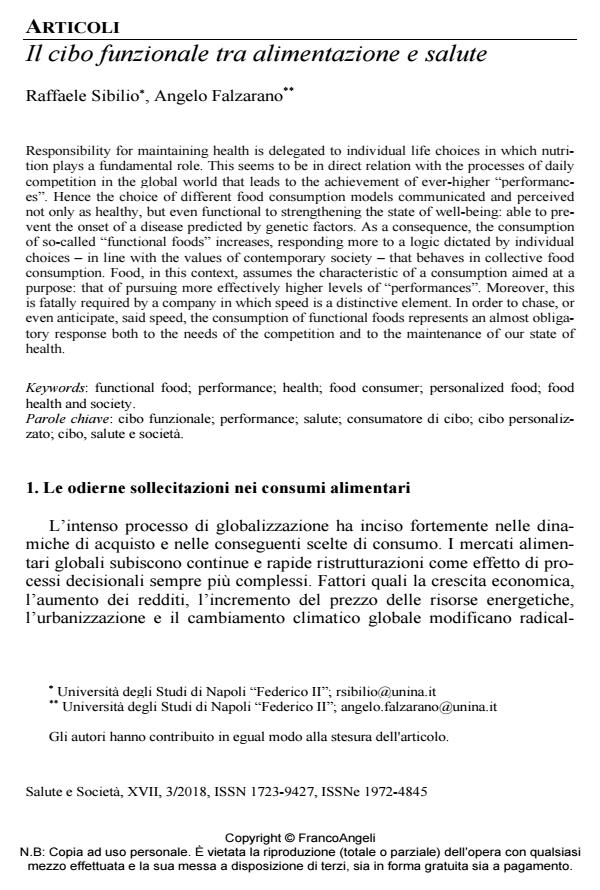Il cibo funzionale tra alimentazione e salute
Journal title SALUTE E SOCIETÀ
Author/s Raffaele Sibilio, Angelo Falzarano
Publishing Year 2018 Issue 2018/3
Language Italian Pages 15 P. 9-23 File size 212 KB
DOI 10.3280/SES2018-003002
DOI is like a bar code for intellectual property: to have more infomation
click here
Below, you can see the article first page
If you want to buy this article in PDF format, you can do it, following the instructions to buy download credits

FrancoAngeli is member of Publishers International Linking Association, Inc (PILA), a not-for-profit association which run the CrossRef service enabling links to and from online scholarly content.
Responsibility for maintaining health is delegated to individual life choices in which nutrition plays a fundamental role. This seems to be in direct relation with the processes of daily competition in the global world that leads to the achievement of ever-higher "performances". Hence the choice of different food consumption models communicated and perceived not only as healthy, but even functional to strengthening the state of well-being: able to prevent the onset of a disease predicted by genetic factors. As a consequence, the consumption of so-called "functional foods" increases, responding more to a logic dictated by individual choices - in line with the values of contemporary society - that behaves in collective food consumption. Food, in this context, assumes the characteristic of a consumption aimed at a purpose: that of pursuing more effectively higher levels of "performances". Moreover, this is fatally required by a company in which speed is a distinctive element. In order to chase, or even anticipate, said speed, the consumption of functional foods represents an almost obligatory response both to the needs of the competition and to the maintenance of our state of health.
Keywords: Functional food; performance; health; food consumer; personalized food; food health and society.
Raffaele Sibilio, Angelo Falzarano, Il cibo funzionale tra alimentazione e salute in "SALUTE E SOCIETÀ" 3/2018, pp 9-23, DOI: 10.3280/SES2018-003002